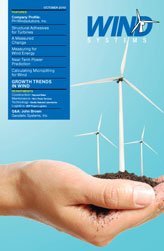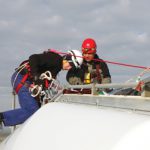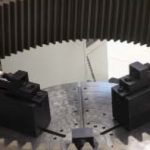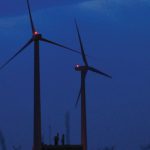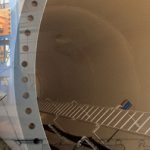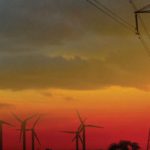Wind energy is becoming a significant player in the electricity supply market. However, the variability of power generation due to uncertain wind supply has become a challenge in the operations and management of wind turbines. Data mining is an emerging science offering great potential to handle this challenge. The data utilized to establish data-driven models has been collected from the SCADA (Supervisory Control and Data Acquisition) systems at a sampling frequency of 0.1 Hz.
Modeling Power Generation
In this article two types of data-driven wind power models are presented. The first model for power prediction is developed based on the power curve equation [1], frequently referred to in research and practice. In the power curve equation all parameters, with the exception of the power coefficient, are measurable. Thus, to estimate the power generated from a wind turbine the power coefficient needs to be computed first. Data-mining algorithms are applied to train the model for the power coefficient.
Besides estimating the turbine-generated power used on the power curve equation, data-mining algorithms can be directly applied to predict the power based on parameters such as wind speed, generator torque, and blade pitch angle. The advantage of this approach for predicting the power generation process is that the error amplified by some terms of the power curve equation can be mitigated.
Multi-Period Power Prediction
These data-driven models are not only able to estimate the power generated at the current time, they are also able to predict the power generated in the future, such as 10 seconds to 1 minute ahead. In order to predict the generated power in the future, the future values of parameters of data-driven models need to be predicted first. The second model discussed in the next section is utilized to demonstrate short-term power predictions. Three parameters—wind speed, generator torque, and blade pitch angle—are considered in the model. The approaches to predict the future values of these parameters are discussed below.
Time-Series Wind Speed Prediction Model
In this section the data-driven approach is used to establish time-series models to predict wind speed by considering its past states. The logic behind constructing the time-series models to predict wind speed is illustrated in Figure 1.
Figure 1 (a) demonstrates the one period (state) ahead prediction based on the past states. The four past states, i.e., the mean measured values over the intervals [t = –40, t = –30), [t = –30, t = –20), [t = –20, t = –10) and [t = –10, t = 0), are the inputs of the data-driven model to predict the mean value over the interval [t = 0, t = 10). The model itself is learned by a data-mining algorithm from the industrial data. Figure 1 (b) shows the prediction of future values at two periods (states) ahead. The previously predicted mean value in the interval [t = 0, t = 10) and the past observed values, [t = –30, t = –20), [t = –20, t = –10) and [t = –10, t = 0), are now treated as the inputs of the model to predict the future state. The prediction function for this state is learned by a data-mining algorithm. Figure 1 (c) illustrates the three-state predictions ahead. The mean value of the future value in the time interval [t = 20, t = 30) is predicted using new inputs, the two past observed values in the intervals, [t = –20, t = –10) and [t = –10, t = 0), and the two previously predicted values over the intervals, [t = 0, t = 10) and [t = 10, t = 20). The formulation of a data-driven model to predict wind speed at one time interval (state) ahead is expressed as equation 1:
(1)![]()
In this equation the parameters—i.e., the number of past states of wind speeds—need to be selected. The importance analysis of the Boosting tree algorithm, which provides the capability to evaluate the contribution of past states to predict future value, is utilized here. Based on the importance analysis, the past states at time t – T, t – 2T, t – 3T, t – 4T, t – 5T and t – 6T, are then selected to estimate the wind speed at time t. The same five data-mining algorithms discussed in this section are used to develop the time-series model for wind speed prediction. Table 1 presents the test results of models extracted by five different algorithms, and Neural Networks is the most effective algorithm of the five to develop the time-series model.
Based on the model developed by a Neural Network, prediction of wind speed at t + 20T, t + 30T, t + 40T, t + 50T and t + 60T can be produced by iteratively implementing the logic presented in Figure 3. Figure 2 illustrates the first 200 data points of predicting wind speed 20-50 seconds ahead.
Prediction of Controllable Parameters
Prediction of future settings of controllable parameters is a complicated issue. However, in a short-term prediction such as one minute ahead an assumption that the future blade pitch angle and generator torque remain the same as the current value can be used to simplify the prediction process of the two controllable parameters, the generator torque, and the blade pitch angle.
The primary reason behind this assumption is that the blade pitch angle, which the blades currently deploy in wind turbines, is essentially fixed below the rated wind speed, and therefore the probability that it will change in 60 seconds is small. The same logic can also be applied to the torque ramp rate. This assumption can be verified by the Markovian analysis of wind speed.
The stochastic nature of the wind prompts modeling its behavior with Markov chains. The probability of the wind speed changing between states is modeled in Figure 3. To develop the irreducible Markov chain in Figure 3 the wind speed is partitioned into 10 intervals (states): [0m/s, 3.5m/s), [3.5m/s, 5m/s), [5m/s, 6m/s), [6m/s, 7m/s), [7m/s, 8m/s), [8m/s, 9m/s), [9m/s, 10m/s), [10m/s, 11m/s), [11m/s, 12m/s), and [12m/s, ∞).
Table 2 shows the transition matrix that presents the probability of the wind speed change (increase or decrease) with the time change to the next minute. The rows and the columns in Table 2 represent the wind speed intervals (states). As presented, the wind speed is likely to stay at its original state (interval) or its neighbor state in 60 seconds. For example, if the wind speed at the current time is [6m/s, 7m/s), the probability that it will still remain in [6m/s, 7m/s) over the next 60 seconds is 0.7075, and the probability that it will move to the neighbor states, here [5m/s, 6m/s) or [7m/s, 8m/s), in the next 60 seconds is 0.2352 (0.1058 + 0.1294).
Table 3 presents the summary of the probability of wind speed remaining at its original or neighbor state at future time intervals t +10-s, t + 20-s, t + 30-s, t + 40-s, t + 50-s, and t + 60-s.
Multi-Period Prediction of Wind Power
The modules of wind speed, generator torque, and blade pitch angle prediction discussed in the preceding two sections are then integrated to predict the power produced at different future intervals. Figure 3 shows the first 200 data points of power prediction 10-60 seconds ahead.
Conclusion
In this article SCADA data was used to predict the power produced by a wind turbine at different intervals. Two different models were introduced. The first model learned the power coefficient function from the turbine data. The second model predicted the turbine power based on the value of the generator torque, blade pitch angle, and wind speed. The performance of the two models was impressive, with the second model demonstrating a certain accuracy advantage. The performance of the models has been discussed in detail [2].
Acknowledgement: The research reported in this article has been supported by the Iowa Energy Center (Grant No. IEC-07-01).
References:
1) B. Boukhezzar and H. Siguerdidjane, “Nonlinear control with wind estimation of a DFIG variable speed wind turbine for power capture optimization”, Energy Conversion and Management, Vol. 50, pp. 885-892, 2009.
2) A. Kusiak and Z. Zhang, “Short-Horizon Prediction of Wind Power: A Data Driven Approach,” IEEE Transactions on Energy Conversion, Vol. 1, pp. 66-76, 2010.



















